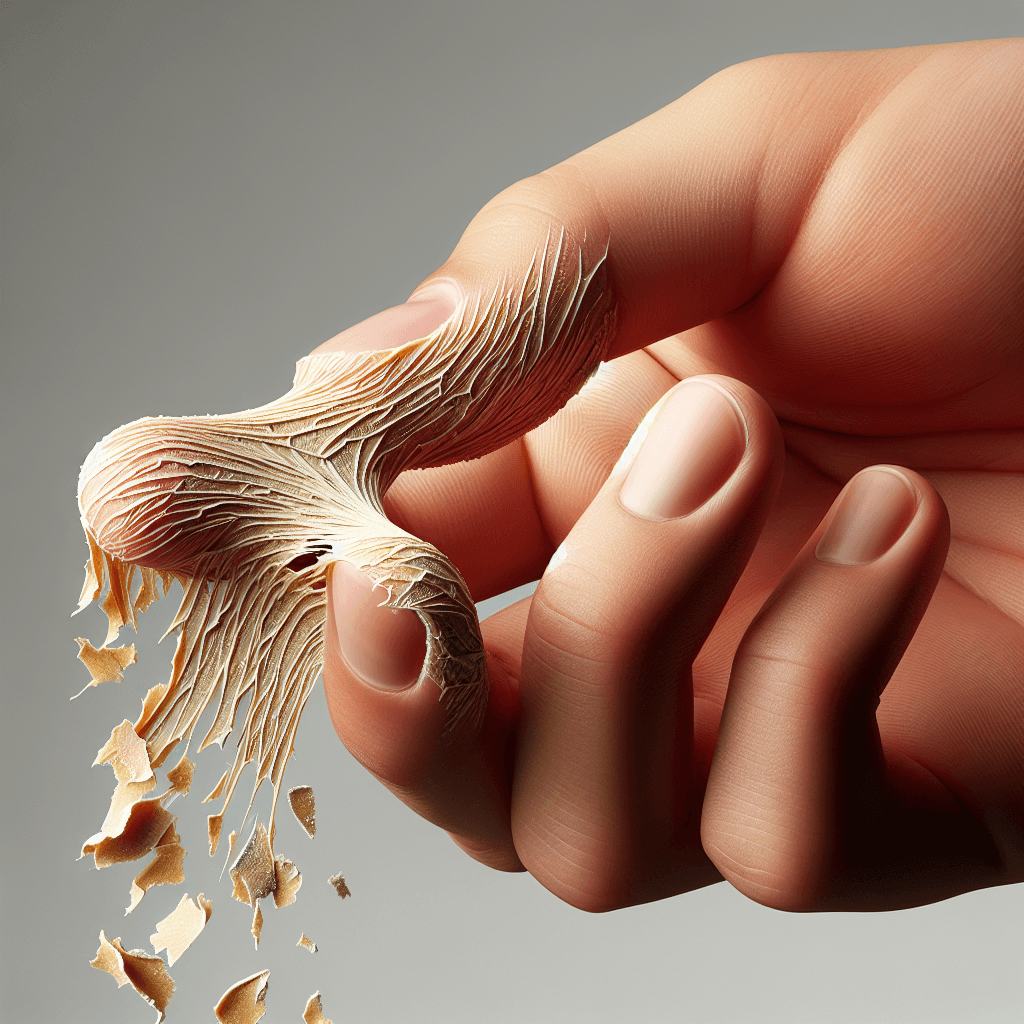Why is peeling a layer of dried glue off your skin so satisfying
That strangely satisfying urge to peel a perfect sheet of glue off your skin isn't just a weird quirk; it's a primal instinct that gives your brain a tiny, perfect hit of order and control.


Too Long; Didn't Read
TLDR: Peeling dried glue is satisfying because it taps into our primal grooming instincts. Your brain releases a rewarding hit of dopamine for completing a small, controlled task, and the clean sensory feedback of restoring order to your skin enhances the feeling.
The Psychology of Peel: Why is Peeling a Layer of Dried Glue Off Your Skin So Satisfying?
Remember that feeling from childhood art class? The “accidental” smear of white PVA glue on the back of your hand, the impatient wait for it to turn clear and dry, and then the glorious, single-minded focus of peeling it off in one perfect, translucent sheet. This small, seemingly insignificant act is a universally understood pleasure, a peculiar quirk that many of us find deeply satisfying. But have you ever wondered why? This simple act isn't just a way to pass the time; it’s a fascinating window into our sensory systems, brain chemistry, and even our evolutionary past. This post will unstick the science behind why peeling dried glue off your skin feels so incredibly good.
The Tingling Sensation: A Sensory Goldmine
At its core, the satisfaction of peeling glue is a tactile experience. When glue dries on your skin, it forms a thin, flexible film that adheres to the top layer of your epidermis and the fine vellus hairs. As you begin to lift an edge and peel it back, you’re creating a gentle, sustained pulling sensation. This process stimulates a dense network of nerve endings in your skin in a very specific, non-threatening way.
Unlike a painful stimulus like ripping off a bandage, the slow, controlled peel provides a unique sensory feedback loop. It’s a mild, tingly sensation that your brain registers as novel and interesting, but not alarming. This controlled stimulation allows you to be fully present in the moment, focusing on the physical sensation without the distraction of pain, making the experience almost meditative.
A Dopamine Hit: Your Brain on "Peel"
Our brains are hardwired to reward us for completing tasks. When we successfully finish a goal, no matter how small, our brain releases a neurotransmitter called dopamine, which is associated with pleasure and motivation. Peeling a sheet of dried glue is a perfect example of a micro-task with a clear beginning, middle, and a very gratifying end.
The process provides a tangible sense of accomplishment:
- The Goal: Remove the entire layer of glue.
- The Process: Carefully lifting the edges and pulling back the film.
- The Reward: A clean patch of skin and the intact, ghostly impression of your skin on the glue sheet.
Achieving the peel in one single, unbroken piece is the ultimate prize, delivering an even bigger dopamine hit. This is the same neurological mechanism that makes popping bubble wrap, crossing items off a to-do list, or solving a small puzzle feel so good. It’s the brain’s way of saying, "Good job! You accomplished something."
Primal Instincts: The Grooming Connection
The urge to peel may also be rooted in our deep-seated, evolutionary instincts. Grooming is a fundamental behavior for many animals, including primates. It's a way to maintain hygiene by removing parasites, dirt, or dead skin, which in turn prevents infection and disease.
Psychologists suggest that peeling glue taps into this ancient, pre-programmed grooming behavior. The dried glue acts as a foreign object or an imperfection on the skin. The focused, deliberate act of removing it mimics the process of cleaning ourselves, triggering an instinctual sense of rightness and order. This is related to why some people find satisfaction in watching pimple-popping videos or peeling sunburned skin (though the latter is definitely not recommended for skin health). We are, on a primal level, driven to make our skin "perfect" and free of blemishes.
Creating Order from Chaos
Finally, there is a powerful psychological element of control and restoration at play. The patch of dried glue represents a small, contained moment of disorder on your body. By peeling it off, you are actively restoring your skin to its original, clean state.
In a world where many things feel chaotic and outside of our control, this simple act provides a micro-dose of agency. You are the one creating order. You control the pace, the direction, and the outcome. This feeling of successfully "fixing" a small imperfection provides a brief but potent sense of calm and control, making the experience psychologically soothing.
Conclusion
The satisfaction of peeling dried glue from your skin is far more than just a silly habit. It’s a complex interplay of sensory stimulation, brain chemistry, evolutionary drives, and the psychological need for order. From the pleasant tingle on your nerve endings to the dopamine rush of a completed task, this simple pleasure reveals the intricate ways our brains are wired to find reward in the small things. So, the next time you find yourself with a dried patch of glue on your hand, you can appreciate the fascinating science behind that simple, satisfying peel. It’s a perfect example of how our minds and bodies work together to create moments of unexpected delight.


